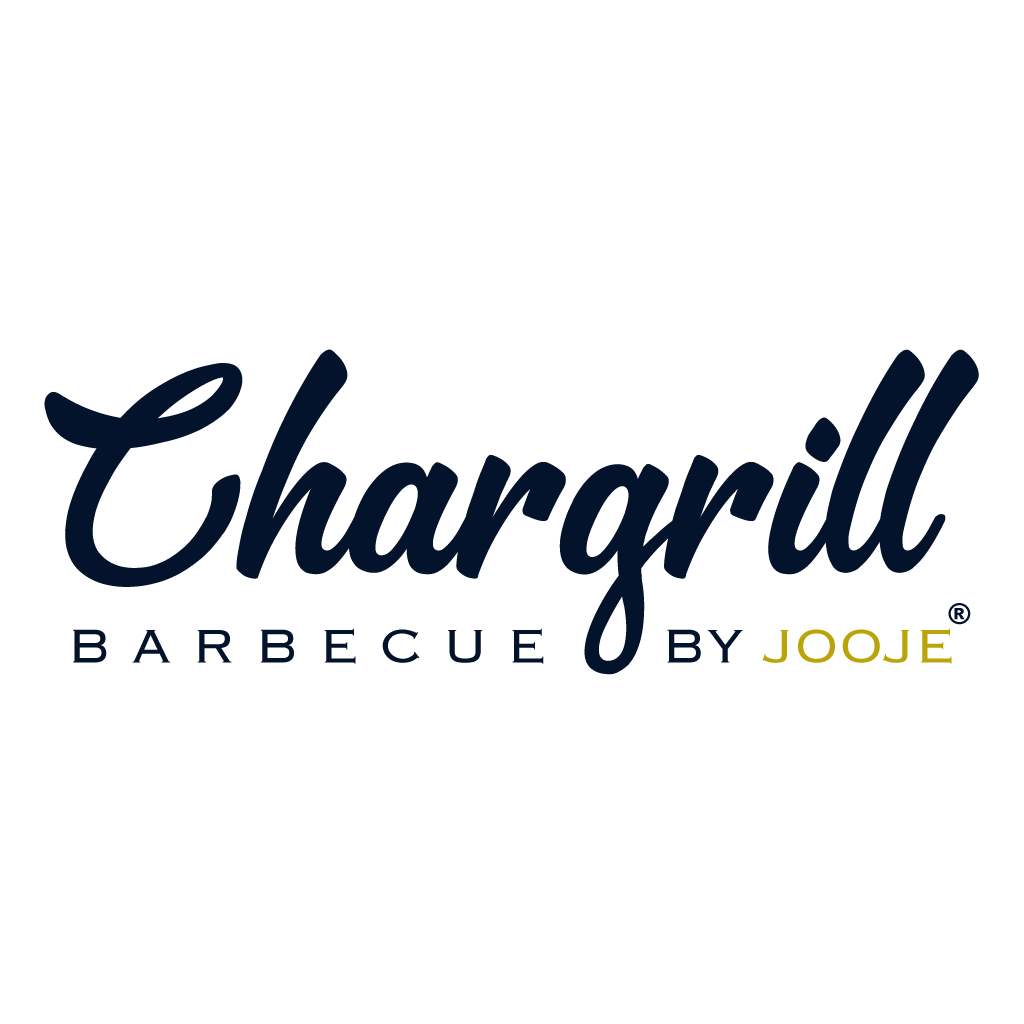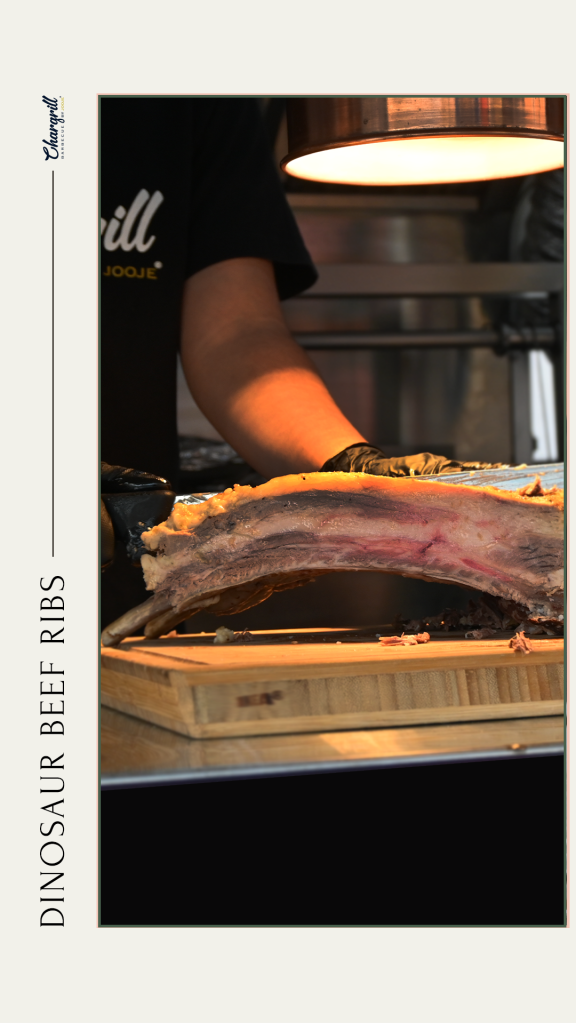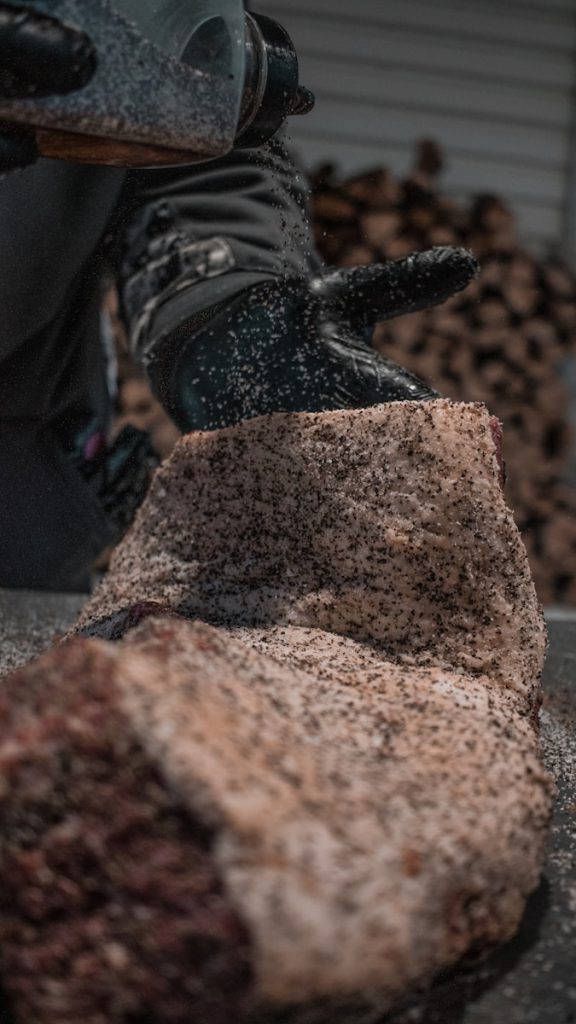Setting up BBQ station involves careful planning and attention to detail to ensure a seamless and enjoyable experience. From choosing the right equipment to ensuring safety measures, this guide will walk you through the best practices for creating an efficient and safe BBQ station. Whether you’re an experienced grill master or a novice, these tips will help you create a BBQ setup that maximizes efficiency, safety, and enjoyment for everyone involved.
Choosing the Right Location
The first step in setting up a BBQ station is selecting the ideal location. This decision impacts safety, convenience, and the overall experience.
Accessibility: Ensure the station is easily accessible for both the cook and guests. The cook should have easy access to the kitchen or food prep area to minimize the distance they need to travel with raw ingredients. Guests should be able to move around without crowding the grill, ensuring a comfortable and enjoyable experience for everyone.
Ventilation: Choose an area with proper ventilation to avoid smoke buildup. Proper airflow is essential for a BBQ station. It helps to keep the smoke away from guests and prevents the cook from inhaling too much smoke, which can be harmful. An open area or a well-ventilated patio can be ideal. If you’re setting up in a more enclosed space, consider using fans or exhaust systems to improve airflow.
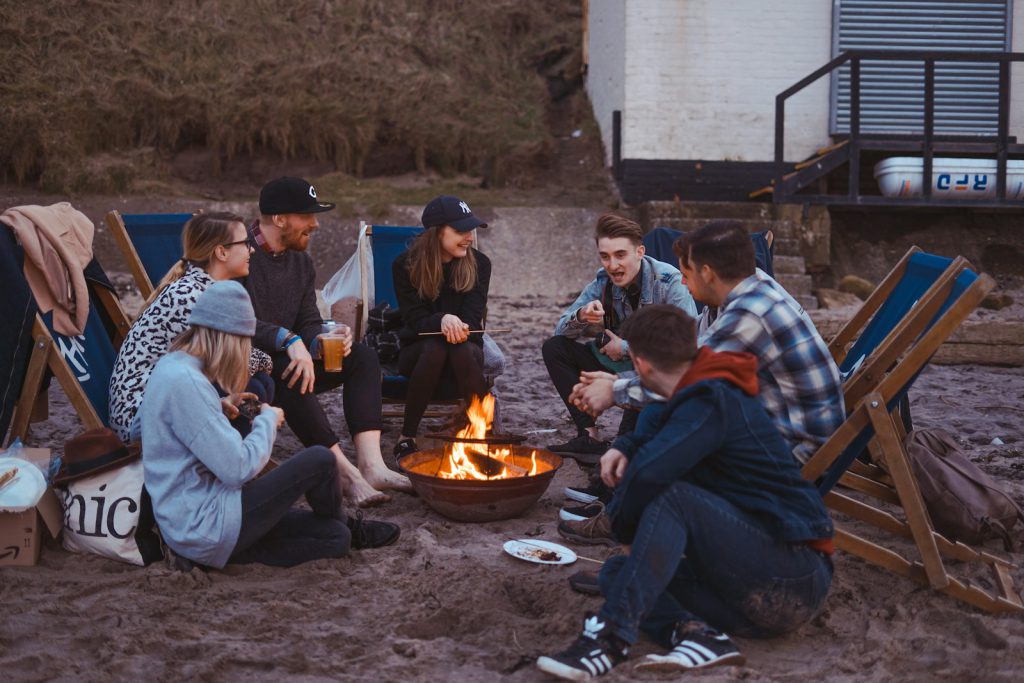
Safety: Keep the station away from flammable materials and high-traffic areas. Safety is paramount when dealing with open flames and hot surfaces. Ensure there’s a safe distance between the BBQ station and any flammable materials, such as wooden decks, dry grass, or overhanging branches. Additionally, keep the station away from areas where children or pets frequently play to prevent accidents.
Consider the Weather: Think about the typical weather conditions in your area when choosing a location. If your region is prone to sudden rain showers, consider setting up under a covered area or using a large umbrella. In very sunny areas, providing some shade for the cook can make the grilling experience more comfortable.
Legal Restrictions: Check local regulations regarding outdoor grilling. Some areas have restrictions on where and when you can use certain types of grills, especially in public spaces or apartment complexes. Ensure you’re compliant with any local laws to avoid fines and ensure the safety of your BBQ event.
Table 1: Location Considerations
| Factor | Importance |
|---|---|
| Accessibility | Ensures ease of movement for cook and guests |
| Ventilation | Prevents smoke buildup |
| Safety | Avoids accidents and injuries |
| Weather Conditions | Provides comfort and protects equipment |
| Legal Restrictions | Ensures compliance with local laws |
Selecting the Appropriate Equipment
The equipment you choose plays a crucial role in the effectiveness of your BBQ station. Investing in the right tools can make the difference between a frustrating experience and a seamless one.
Grills and Smokers: Compare gas, charcoal, and electric grills. Each type of grill has its advantages and disadvantages. Gas grills offer convenience and control over temperature, making them ideal for those who want a quick and easy grilling experience. Charcoal grills provide a smoky flavor that many BBQ enthusiasts prefer, but they require more time and effort to manage. Electric grills are great for small spaces and areas where open flames are not allowed, but they might not provide the same flavor profile as gas or charcoal grills. Smokers are perfect for slow-cooking meats to perfection, offering a deep, rich flavor that’s hard to achieve with standard grills.
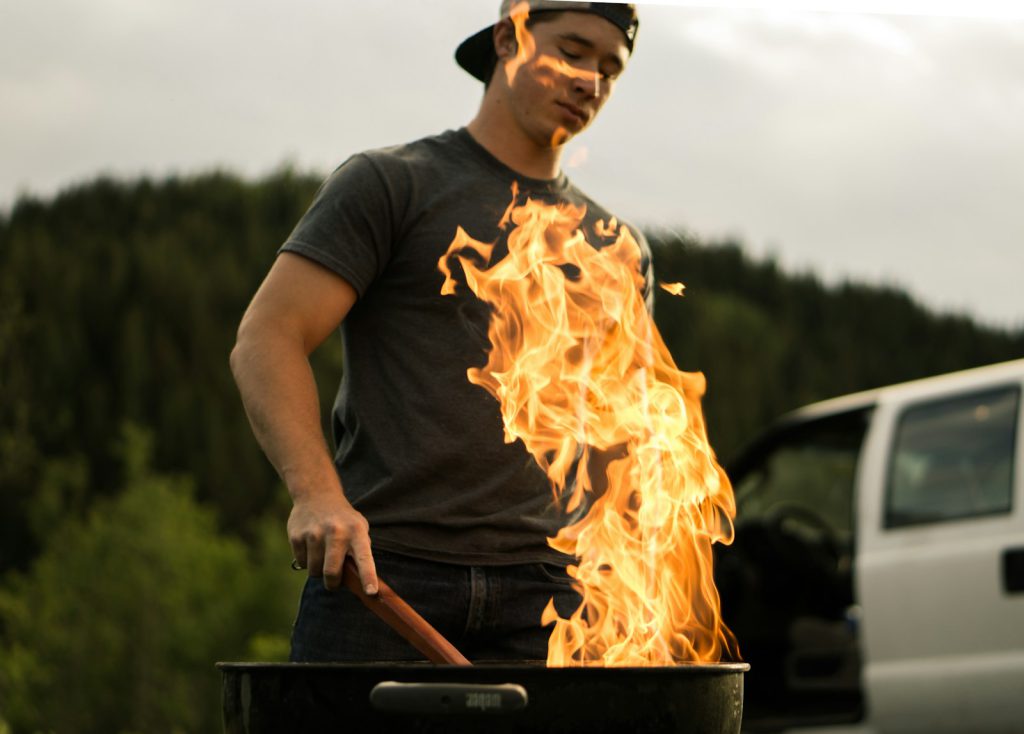
Accessories: Invest in high-quality tools such as tongs, spatulas, and thermometers. The right tools can make grilling much easier and more enjoyable. Long-handled tongs and spatulas help keep your hands safe from the heat. A good meat thermometer is essential for ensuring your meats are cooked to the correct temperature, which is crucial for both taste and safety. Consider additional accessories like grill brushes for cleaning, heat-resistant gloves, and a chimney starter for charcoal grills.
Work Surface: A sturdy, heat-resistant table or countertop. Having a dedicated work surface near your grill can make the cooking process much more efficient. Look for a table or cart that is heat-resistant and provides enough space for you to prep ingredients, store utensils, and keep cooked food. Some BBQ stations come with built-in countertops, while others might require you to set up a separate table.
Fuel Storage: Ensure you have a safe and accessible place to store your fuel. For gas grills, this means having extra propane tanks on hand. For charcoal grills, keep charcoal briquettes or lump charcoal stored in a dry place. If you’re using a smoker, have plenty of wood chips or pellets ready. Proper storage not only ensures you don’t run out of fuel mid-cook but also keeps your grilling area organized and safe.
Specialty Equipment: Depending on your BBQ style, you might need additional equipment. For example, if you enjoy smoking meats, a smoker box or a dedicated smoker might be necessary. If you often cook large cuts of meat, a rotisserie attachment can be very useful. Consider your cooking habits and invest in equipment that will enhance your BBQ experience.
Table 2: Equipment Comparison
| Equipment Type | Pros | Cons |
|---|---|---|
| Gas Grill | Easy to use, temperature control | Lacks smoky flavor of charcoal |
| Charcoal Grill | Rich, smoky flavor | Takes time to heat up, harder to control |
| Electric Grill | Convenient, great for small spaces | Limited flavor profile compared to gas/charcoal |
| Smoker | Perfect for slow-cooked meats | Requires more time and attention |
List of Essential Accessories:
- Long-handled tongs
- Spatulas
- Meat thermometers
- Grill brushes
- Heat-resistant gloves
- Chimney starter (for charcoal grills)
Ensuring Safety Measures
Safety should be a top priority when setting up a BBQ station. Proper safety measures can prevent accidents and ensure a fun and enjoyable BBQ experience for everyone.
Fire Extinguishers: Keep a fire extinguisher nearby and know how to use it. A fire extinguisher is an essential safety tool for any BBQ station. Make sure it is rated for grease fires, as these are common in BBQ settings. Place it in an easily accessible location, and ensure everyone knows how to use it. Regularly check the extinguisher to ensure it’s in good working condition and hasn’t expired.
First Aid Kit: Have a first aid kit readily available. Accidents can happen, even with the best precautions in place. A first aid kit should include bandages, antiseptic wipes, burn cream, and other basic medical supplies. Having these items on hand can help you quickly address minor injuries and prevent them from becoming more serious.
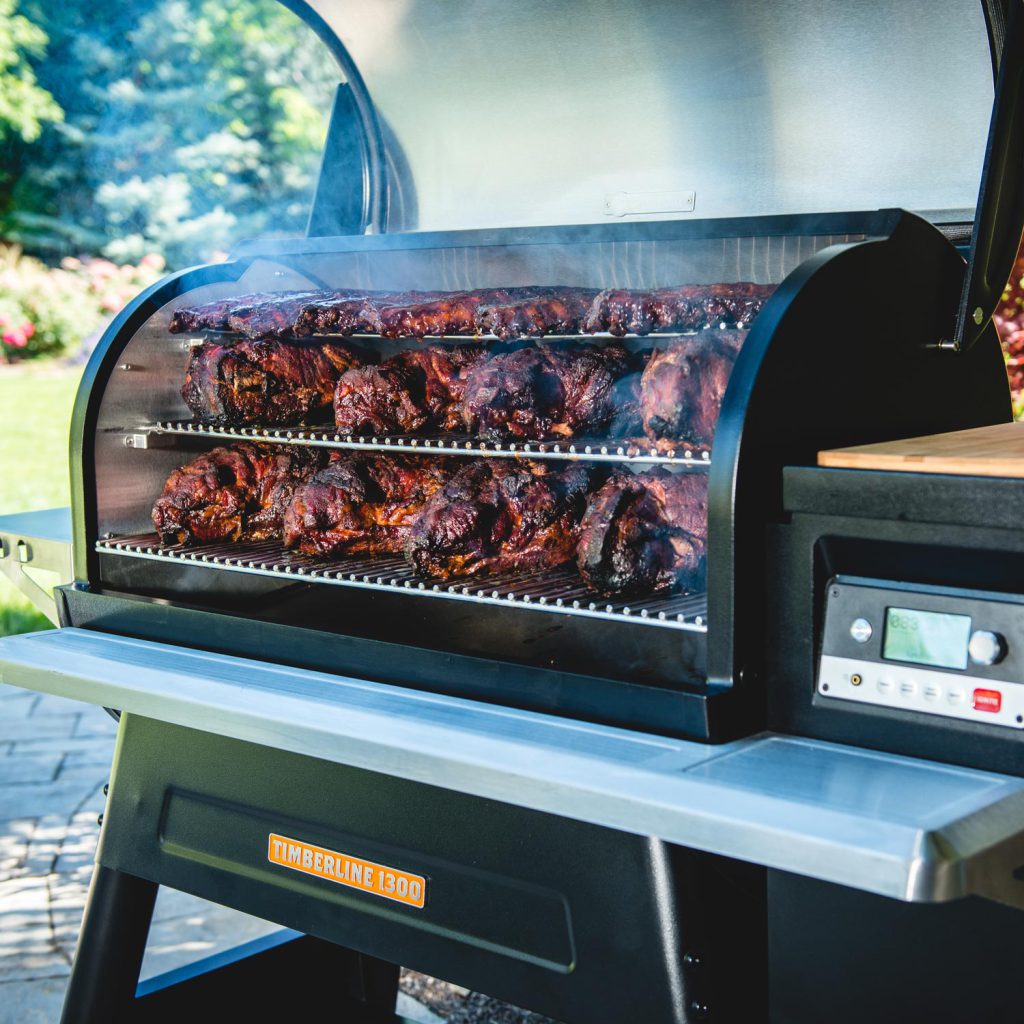
Clear Area: Maintain a clear zone around the BBQ station to prevent accidents. Ensure that the area around your grill is free from clutter and any flammable materials. This includes keeping children and pets away from the cooking area. Establish a safe zone where only the cook and necessary helpers are allowed. Use barriers or clear markings to indicate this area if needed.
Proper Lighting: If you plan to grill in the evening or at night, ensure your BBQ station is well-lit. Poor lighting can lead to accidents and make it difficult to see what you’re cooking. Use outdoor-rated lights to illuminate the cooking area and paths to and from the BBQ station.
Ventilation: Ensure there is adequate ventilation to prevent the buildup of harmful fumes. If you’re grilling in a semi-enclosed space like a garage or under a canopy, make sure there is plenty of airflow. Carbon monoxide and other harmful gases can accumulate in poorly ventilated areas, posing a serious health risk.
Safety Gear: Wear appropriate safety gear while grilling. This includes heat-resistant gloves, an apron to protect your clothes, and closed-toe shoes to protect your feet from hot spills or dropped utensils. Avoid wearing loose clothing that could catch fire or get caught on grill handles.
Table 3: Safety Measures Checklist
| Safety Measure | Description |
|---|---|
| Fire Extinguisher | Rated for grease fires, accessible location |
| First Aid Kit | Includes bandages, antiseptic wipes, burn cream |
| Clear Area | Free from clutter, safe zone established |
| Proper Lighting | Outdoor-rated lights for evening grilling |
| Ventilation | Adequate airflow in semi-enclosed spaces |
| Safety Gear | Heat-resistant gloves, apron, closed-toe shoes |
List of Essential Safety Gear:
- Heat-resistant gloves
- Apron
- Closed-toe shoes
- Long-handled tongs
- Meat thermometer
Organizing the Cooking Area
An organized cooking area enhances efficiency and ensures a smooth BBQ process. Proper organization helps you focus on cooking and serving delicious food without unnecessary stress.
Layout: Arrange equipment and ingredients logically. The layout of your BBQ station should be intuitive and efficient. Place the grill in the center, with prep tables and storage areas within easy reach. Keep frequently used items like tongs, spatulas, and seasonings close at hand. Organize ingredients so that raw meats are separated from vegetables and other foods to avoid cross-contamination.
Storage: Utilize shelves and containers for easy access to tools and ingredients. Invest in storage solutions like shelves, hooks, and bins to keep your BBQ station tidy. Use containers to store spices, sauces, and other small items. Hooks can hold utensils, keeping them within reach but off your workspace. A well-organized storage system helps you find what you need quickly and keeps your cooking area clutter-free.
Cleaning Station: Set up a cleaning station for quick clean-ups during cooking. A dedicated cleaning station with a sink or a bucket of soapy water can make it easy to clean utensils and surfaces as you go. Keep paper towels, cleaning cloths, and sanitizing wipes handy for quick spills and messes. Regularly clean the grill grates to prevent food residue buildup, which can affect the taste and quality of your food. Having a trash bin nearby for food scraps and waste also helps maintain a tidy work area.
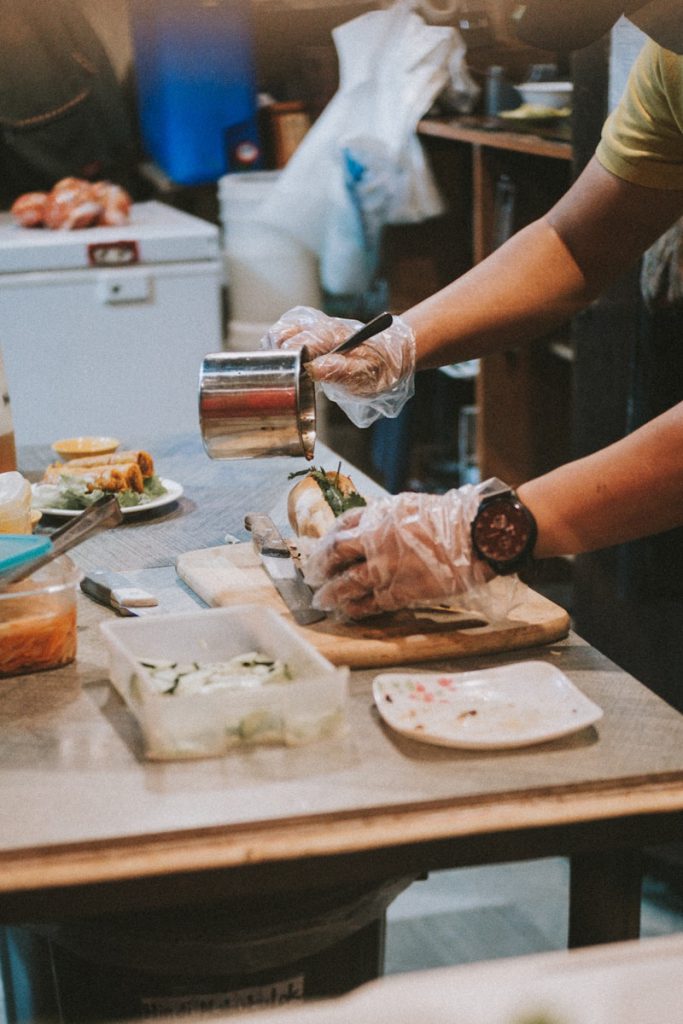
Prep Area: Create a separate area for food preparation. This area should be distinct from the cooking and serving areas to maintain hygiene and organization. Use cutting boards and prep trays to keep ingredients organized. Consider using color-coded cutting boards to prevent cross-contamination between raw and cooked foods.
Tool Management: Keep your grilling tools organized and easily accessible. Use a tool rack or magnetic strip to hang your utensils. This keeps them off the counter and within easy reach. Label your tools if necessary to quickly identify them. Regularly check your tools for wear and tear and replace them as needed.
Space Management: Maximize your workspace by using vertical space and multi-functional furniture. Shelves and hooks can free up counter space, while carts with wheels allow you to move items around as needed. Consider collapsible tables and stackable bins for easy storage when not in use.
Table 4: Organizing the Cooking Area
| Task | Best Practices |
|---|---|
| Layout | Centralize grill, keep items within reach |
| Storage | Use shelves, hooks, and bins |
| Cleaning Station | Have sink or soapy water, paper towels, trash bin |
| Prep Area | Separate from cooking area, use color-coded boards |
| Tool Management | Use tool rack or magnetic strip, label tools |
| Space Management | Use vertical space, multi-functional furniture |
List of Storage Solutions:
- Shelves for spices and sauces
- Hooks for utensils
- Bins for small items
- Tool rack or magnetic strip for tools
- Carts with wheels for mobility

Preparing Ingredients in Advance
Prepping ingredients ahead of time can save time and reduce stress during the BBQ. Preparation ensures that everything is ready when you need it, allowing you to focus on cooking and entertaining.
Marinating: Marinate meats the night before. Marinating meats in advance allows the flavors to fully penetrate the meat, resulting in a more flavorful and tender dish. Use resealable plastic bags or airtight containers to marinate your meats in the refrigerator. Make sure to turn the meats occasionally to ensure even marination. Some popular marinades include soy sauce and garlic for beef, citrus and herbs for chicken, and olive oil and rosemary for lamb.
Chopping: Chop vegetables and prepare sides in advance. Pre-chopping vegetables and preparing side dishes the day before can save a significant amount of time on the day of the BBQ. Store chopped vegetables in airtight containers in the refrigerator to keep them fresh. Preparing salads, coleslaw, and other side dishes ahead of time allows you to focus on grilling.
Portioning: Portion ingredients to ensure even cooking. Ensuring that meats and vegetables are cut into uniform sizes helps them cook evenly. This also makes it easier to manage cooking times and prevents undercooking or overcooking. Use kitchen scales and measuring cups to portion ingredients accurately.
Table 5: Preparing Ingredients in Advance
| Task | Best Practices |
|---|---|
| Marinating | Use resealable bags, marinate overnight |
| Chopping | Pre-chop vegetables, store in airtight containers |
| Portioning | Cut into uniform sizes, use scales and measuring cups |
List of Prepping Tools:
- Resealable plastic bags
- Airtight containers
- Kitchen scales
- Measuring cups
- Cutting boards
- Sharp knives

Managing Waste and Clean-Up
Efficient waste management and clean-up are essential for maintaining a tidy BBQ station. Proper waste management ensures a clean cooking environment and makes the clean-up process more manageable.
Trash Bins: Place trash bins nearby for easy disposal of waste. Having multiple trash bins around the BBQ station can help manage waste effectively. Use separate bins for general waste, food scraps, and recyclables. Clearly label each bin to encourage proper disposal.
Recycling: Set up a recycling station for bottles, cans, and other recyclables. Encourage guests to recycle by providing clearly marked recycling bins. Ensure the recycling station is easily accessible and inform guests about what can be recycled.
Clean Tools: Clean and store tools properly after use. Immediately cleaning grilling tools and utensils after use prevents food from hardening and becoming difficult to remove. Use a grill brush to clean the grates while they are still warm. Soak utensils in soapy water to loosen any residue before scrubbing them clean.
Composting: Consider setting up a compost bin for organic waste. Composting food scraps like vegetable peels and fruit cores can reduce the amount of waste sent to landfills and create valuable compost for gardening.
Table 6: Waste Management and Clean-Up
| Task | Best Practices |
|---|---|
| Trash Bins | Multiple bins for waste, food scraps, recyclables |
| Recycling | Clearly marked recycling bins |
| Clean Tools | Clean immediately after use, soak utensils |
| Composting | Set up compost bin for organic waste |
List of Waste Management Supplies:
- Trash bins
- Recycling bins
- Compost bin
- Grill brush
- Dish soap
- Cleaning cloths
Enhancing Guest Experience
A well-set BBQ station can significantly enhance the guest experience. Creating a comfortable and enjoyable environment for your guests ensures they have a memorable time.
Seating Arrangements: Provide comfortable seating and shade for guests. Arrange seating to encourage conversation and ensure everyone has a good view of the grill. Use umbrellas, canopies, or trees to provide shade. Comfortable chairs and tables at the right height can make a big difference.
Entertainment: Set up speakers for music or games for entertainment. Background music can create a pleasant atmosphere. Consider setting up a portable speaker system and creating a playlist suited to the occasion. Lawn games like cornhole, frisbee, or badminton can also keep guests entertained while the food is cooking.
Presentation: Present food attractively to create a pleasant dining experience. Use platters, serving trays, and garnishes to make the food look appetizing. Keep hot foods hot and cold foods cold to maintain their quality. Consider setting up a buffet-style serving area where guests can help themselves.
Table 7: Enhancing Guest Experience
| Aspect | Best Practices |
|---|---|
| Seating Arrangements | Comfortable chairs, shaded areas |
| Entertainment | Music, lawn games |
| Presentation | Attractive platters, buffet-style serving area |
List of Guest Experience Enhancements:
- Comfortable chairs
- Tables with umbrellas
- Portable speaker system
- Lawn games
- Serving platters
- Garnishes for food presentation
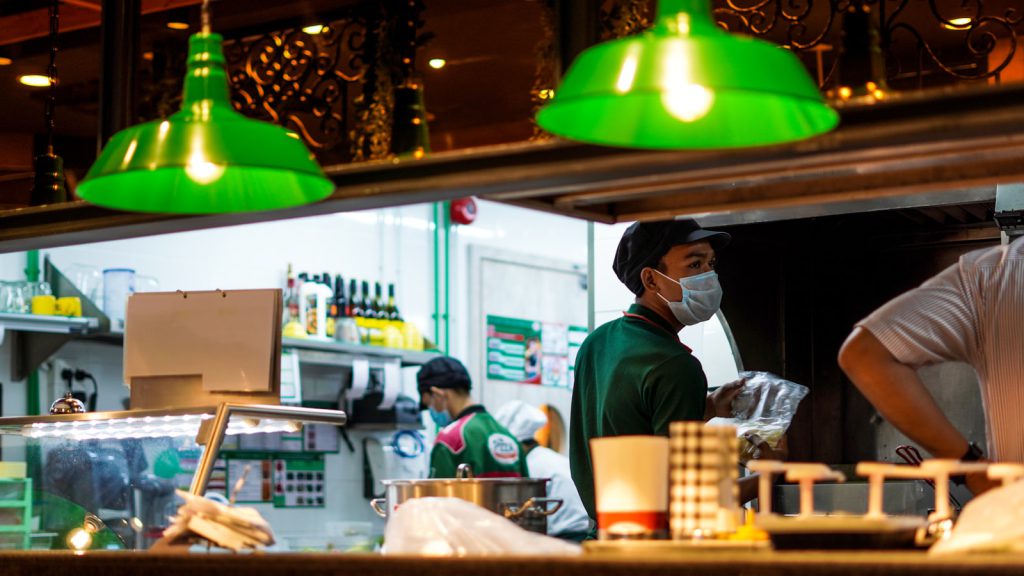
Incorporating Health and Safety Tips
Incorporating health and safety tips ensures a safe BBQ environment for everyone. Maintaining proper hygiene and cooking practices prevents foodborne illnesses and accidents.
Hygiene: Maintain proper hygiene by washing hands and using clean utensils. Ensure that the cook and any helpers wash their hands frequently, especially after handling raw meat. Use separate utensils and cutting boards for raw and cooked foods to prevent cross-contamination.
Cooking Temperatures: Cook meat to the recommended internal temperatures. Use a meat thermometer to check the internal temperature of meats. Ensure that poultry reaches at least 74°C (165°F), ground meats reach 71°C (160°F), and steaks, chops, and roasts reach at least 63°C (145°F).
Allergies: Be aware of guest allergies and prepare food accordingly. Ask your guests in advance about any food allergies or dietary restrictions. Label dishes that contain common allergens like nuts, dairy, and gluten. Prepare separate dishes for guests with specific dietary needs to avoid cross-contact.
Table 8: Health and Safety Tips
| Tip | Best Practices |
|---|---|
| Hygiene | Frequent handwashing, use clean utensils |
| Cooking Temperatures | Use meat thermometer, cook to safe temperatures |
| Allergies | Ask guests about allergies, label dishes |
List of Health and Safety Supplies:
- Hand soap
- Clean utensils
- Meat thermometer
- Labels for dishes
Troubleshooting Common Issues
Being prepared to troubleshoot common BBQ issues can prevent disruptions. Knowing how to handle common problems ensures a smooth and enjoyable BBQ experience.
Flare-Ups: Learn how to handle flare-ups safely. Flare-ups occur when fat drips onto the flames, causing a burst of fire. To manage flare-ups, move the food to a cooler part of the grill and close the lid to cut off the oxygen supply. Keep a spray bottle of water handy to douse small flames.
Temperature Control: Manage temperature fluctuations effectively. Maintaining a consistent temperature is key to successful grilling. Use a grill with adjustable vents to control airflow. For charcoal grills, add more charcoal as needed to maintain heat. For gas grills, monitor the flame and adjust the burners as necessary.
Equipment Malfunctions: Have a backup plan for equipment failures. Equipment can fail unexpectedly, so it’s important to have a backup plan. Keep extra propane tanks or charcoal on hand. If your grill breaks down, have an alternative cooking method ready, such as a portable stove or a fire pit.
Table 9: Troubleshooting Common Issues
| Issue | Best Practices |
|---|---|
| Flare-Ups | Move food to a cooler part of the grill, close the lid, use a spray bottle of water for small flames |
| Temperature Control | Use adjustable vents, add charcoal as needed, monitor and adjust gas burners |
| Equipment Malfunctions | Keep extra fuel, have alternative cooking methods (portable stove, fire pit) |
List of Troubleshooting Supplies:
- Spray bottle of water
- Extra charcoal or propane tanks
- Portable stove
- Fire pit
- Grill manual for quick reference
Conclusion
Setting up a BBQ station requires careful planning and attention to detail. By following these best practices, you can create a safe, efficient, and enjoyable BBQ experience for both the cook and guests. From choosing the right location and equipment to ensuring safety measures and organizing the cooking area, each step is crucial in creating a successful BBQ setup. Prepping ingredients in advance, managing waste, enhancing the guest experience, incorporating health and safety tips, and being prepared to troubleshoot common issues are all integral to a seamless BBQ event. With these guidelines, you’ll be well-equipped to host memorable BBQ gatherings that everyone will enjoy.
